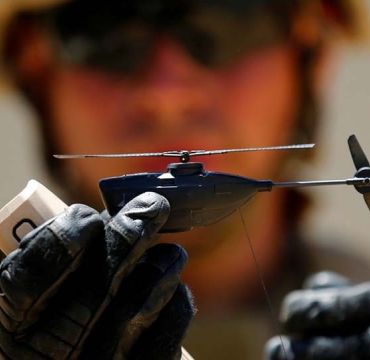LandX22 – Experimentation with uncrewed systems in a future combat unit
Om publikasjonen
ISBN
9788246435404
Størrelse
4.2 MB
Språk
Engelsk
LandX22 var et samarbeidseksperiment og et generelt samarbeid mellom Forsvarets forskningsingstitutt (FFI), Combat Lab, Kongsberg Defence & Aerospace (KDA) og Teleplan. Fire prosjekter fra Forsvarets forskningsinstitutt (FFI) deltok. Målene med eksperimentet var å teste og demonstrere hvordan ubemannede systemer, både autonome og teleopererte, kan brukes i en konseptuell morgendagens kampenhet for å bekjempe en angripende mekanisert fiendtlig styrke.
Eksperimentet og demonstrasjon ble gjennomført mellom 26.-30. september, integrasjonsuken, og mellom 17.-20. oktober, der siste dag var åpen for inviterte besøkende og demonstrasjon ble avholdt.
Eksperimentet inkluderte mange forskjellige systemer utviklet hos FFI. To Ubemannede kjøretøy (Unmanned Ground Vehicle (UGV)), ett for å teste autonomi og det andre for å teste manned-unmanned teaming, og to flygende drone-systemer (Unmanned Areal Vehicle (UAV)); sverm- og avskjæringsdroner (interceptor).
UAV eksperimentene var vellykkede. Sverm UAV-dronene demonstrerte økt situasjonsforståelse med kun å bruke én enslig operatør, og avskjæringsdronen tok ned en måldrone.
Manned unmanned teaming (MUM-T) eksperimentet ble også vellykket, der én operatør demonstrerte bruk av UGV og våpenstasjon (Remote Weapon Station (RWS)) fra samme operatørstasjon (Operator Control Unit (OCU)) for å bekjempe fiendtlige styrker. Eksperimentet viste også at økt situasjonsforståelse for operatøren er nødvendig, da det eksperimentelle kameraoppsettet hadde svakheter.
UGV autonomieksperimentet var delvis vellykket, da UGV Tor hadde autonomisensor maskinvareproblemer, og følgende fikk problemer med den autonome kjøringen. Aktiviteten med speiding og identifisering av fiendtlige styrker ved bruk av elevert overvåkingssensor montert på UGV Tor var imidlertid en suksess, som gjorde de andre styrkene i stand til å nedkjempe de identifiserte fiendtlige styrkene.
Combat Lab’s primærmål under LandX, som var å gi FFI direktevideo fra en elevert tjoret drone integrert direkte inn i kommando og kontroll nettverket, ble oppnådd. Sekundærmålet, diverse tester av tjorede droner, ble bra gjennomført og gav nyttig informasjon om de testede dronesystemenes kapabiliteter.
Teleplan distribuerte video, egen posisjoner og synsfelt fra de forskjellige systemene brukt under demonstrasjonen på kommando og kontroll nettverket. Teleplan demonstrerte også funksjonene til Teleplan Tactical Media Suite for videostrømming, og demonstrerte at nye systemer/teknologier kan integreres og samarbeide med eksisterende systemer, som CV9030N og droner.
